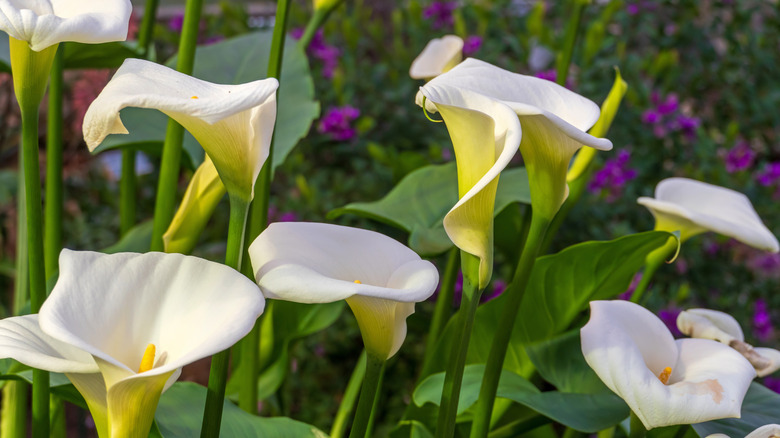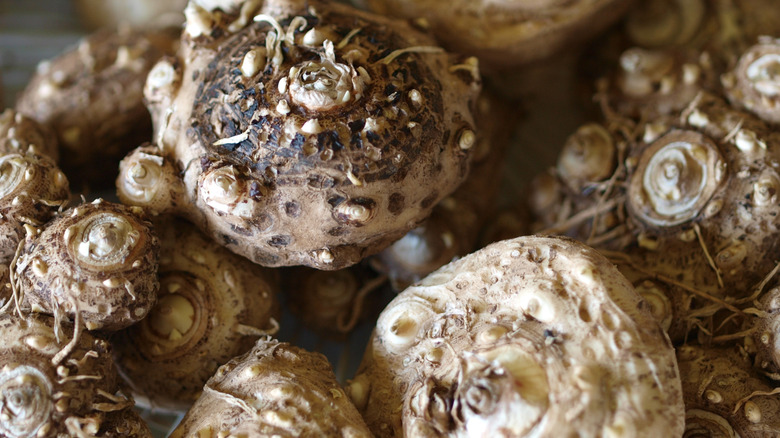How To Winterize Your Calla Lily Plants (Both Indoors & Outdoors) To Enjoy Blooms For Years To Come
With their striking, trumpet-shaped blooms, calla lilies (Zantedeschia spp.) are fantastic flowers to bring a touch of elegance to your yard. However, these wonderful plants are tender perennials and may die over the winter months if not cared for properly. How you winterize your calla lilies depends on your climate. If you live in a warmer location where temperatures will not dip below 30 degrees Fahrenheit, you can keep them outside after prepping them correctly for the colder months. However, if you live somewhere where temperatures drop below 30 degrees Fahrenheit, you need to bring the plant inside in the fall.
To save your calla lilies for next year outdoors in a warm climate, stop watering them in the fall, as they will need to go into dormancy to protect themselves. Once they have started to fade, cut back the leaves and apply a thick mulch around the plant. You may also wish to completely cover the plants with straw, using chicken wire to help it stay in place.
If your calla lilies are in containers outdoors, they will be much more vulnerable to injury and death. If possible, bring the container indoors to a warm environment. If you can't bring it inside, bury the pot in the ground and cover it with mulch for insulation. When this is not possible either, you should dig up these cold-sensitive flowers and save them for next season by storing them somewhere suitable.
How to winterize calla lily plants indoors
For colder climates and calla lilies in containers, you can help them survive winter by digging up their rhizomes in the fall. After the first frost, cut the leaves down to the soil, leaving about 2 inches of growth. Then, carefully dig into the soil to bring the rhizomes up. It is essential that you don't cut or injure the rhizomes at this point, so take your time!
Once you have removed the rhizomes, shake off the soil, and then gently wash off any remaining dirt. Inspect them for damage, and discard any that are diseased or injured. Then, cure the rhizomes by storing them in a warm, dry, shady location. Ensure that they are protected from direct sunlight and at a temperature of around 60 to 70 degrees Fahrenheit. Leave the rhizomes here for a week or two before burying them in peat moss, sawdust, or vermiculite and placing them in a dry location of around 50 to 60 degrees Fahrenheit.
Keep an eye on the rhizomes throughout winter to ensure they are not wet or too cold, and come spring, you can replant them and enjoy these perennials with gorgeous white flowers for a new season.

